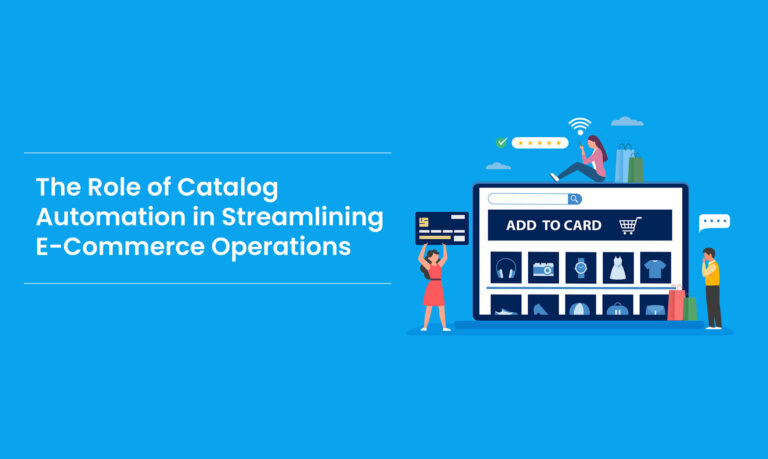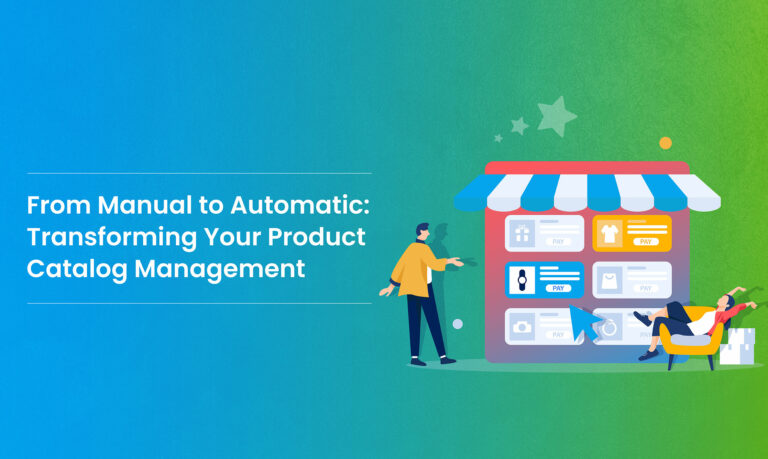Beyond capturing attention, compelling visuals are crucial for fostering confidence among potential buyers. Clear and detailed images contribute to a positive perception of product quality and features.
In an era of heightened competition in the e-commerce landscape, brands face the challenge of standing out amidst myriad options. Effective mobile product presentation becomes a key differentiator.
Visual commerce plays a key role in enhancing customer experience. As consumer preferences evolve, brands must adapt to changing expectations regarding how products are showcased on small screens, considering factors like interactivity and engagement.
Slow-loading e-commerce product images can hinder the user experience. Brands must optimize image load times for mobile users, ensuring swift and seamless navigation through an e-commerce product catalog.
Introduction
In mobile commerce, where consumers increasingly use small screens for purchasing decisions, e-commerce product images play a crucial role. Recent data from Insider Intelligence indicates that e-commerce sales are expected to constitute 43.4% of total retail e-commerce sales in 2023, emphasizing the need to create seamless mobile experiences with compelling product images.
Consumers’ shift toward mobile devices for shopping highlights the growing significance of e-commerce. Insider Intelligence predicts e-commerce sales will reach $534.18 billion, comprising 40.4% of e-commerce sales, in 2024. The rise of one-click checkout and social media “buy buttons” reflects the potential for e-commerce to reshape consumer habits, especially among tech-savvy demographics.
As mobile becomes the preferred channel for online shopping, the impact of Artificial Intelligence (AI) on e-commerce product images becomes pivotal. AI’s role in optimizing product images for small screens aligns with the upward trajectory of mobile commerce, enhancing user experiences and driving conversions. This article explores the transformative influence of AI in this dynamic intersection of mobile business and e-commerce product presentation.
The Significance of E-commerce Product Images
In the digital realm, e-commerce product images function as the virtual storefront, offering a visual gateway for online shoppers. As the prevalence of mobile devices in the shopping journey continues to rise, the importance of these images becomes even more pronounced. Beyond merely capturing attention, high-quality and compelling visuals play a pivotal role in fostering confidence among potential buyers. In an era where the e-commerce landscape is marked by heightened competition and evolving consumer preferences, brands are compelled to navigate the distinctive challenges posed by the constraints of small screens. Adaptation to this mobile-centric paradigm is not just a choice but a strategic imperative for brands vying for success in the dynamic world of online retail.
Challenges in Mobile Commerce Product Presentation
In the digital realm, e-commerce product images function as the virtual storefront, offering a visual gateway for online shoppers. As the prevalence of mobile devices in the shopping journey continues to rise, the importance of these images becomes even more pronounced. Beyond merely capturing attention, high-quality and compelling visuals play a pivotal role in fostering confidence among potential buyers. In an era where the e-commerce landscape is marked by heightened competition and evolving consumer preferences, brands are compelled to navigate the distinctive challenges posed by the constraints of small screens. Adaptation to this mobile-centric paradigm is not just a choice but a strategic imperative for brands vying for success in the dynamic world of online retail.
AI-Driven Transformations: Revolutionizing E-commerce Product Presentation
E-commerce has revolutionized retail, simplifying shopping for millions. However, integrating artificial intelligence (AI) is pushing the boundaries even further. Specifically, AI is reshaping product images on e-commerce websites, offering advancements that transform how customers perceive products online. Explore how AI can elevate the presentation and appeal of a site’s virtual shelf space, bringing significant benefits without increasing the workload for site owners.
- Image Editing
Innovative AI photo editing tools automatically enhance the visual appearance of product images, adjusting brightness, composition, and color balance. This not only increases perceived value but also builds buyer trust. AI-driven automation ensures professional results without the time-consuming process of manual editing.
- Product Displays
AI optimizes product displays, categorizing items based on images and showcasing similar or complementary products. By analyzing visitor behavior, AI algorithms personalize product displays for each customer, offering a tailored shopping experience.
- Image Quality
AI enhances image quality by increasing resolution, correcting color discrepancies, and adjusting backgrounds. High-quality images are crucial in e-commerce, influencing buying decisions, and improving image standards with AI can significantly boost sales.
Product Recognition
AI advancements in product recognition improve search functionality, make personalized recommendations, and increase convenience for shoppers. Image-based search and recognition of browsing history allow for a more engaging and efficient online shopping experience.
- 3D Imaging
AI-enhanced 3D Imaging lowers the barrier to entry, allowing retailers to turn 2D product images into lifelike 3D models. This innovation provides a 360-degree view, an interactive user experience, and enhanced buyer confidence, resembling an offline shopping experience.
- Product Customization
AI facilitates smoother product customization, allowing users to visualize changes in real-time. Personalized recommendations based on previous customizations and purchases reduce return rates, enhancing customer confidence and loyalty.
AI-Driven Solutions for E-commerce Product Images
Here are a few AI-driven solutions for E-commerce product images:
- Link Sourcing
Discover new opportunities with AI-enabled link sourcing. This technology enables online sellers to find sources selling the same products based on various parameters, including ASIN, UPC, EAN, title, brand name, or even image. Link sourcing opens up new marketing possibilities, maximizing the potential for online sellers.
- Generate Product Descriptions
AI tools play a pivotal role in creating SEO-optimized product descriptions. By utilizing persuasive content generation, these solutions ensure that product descriptions attract qualified traffic, improve search engine visibility, and maximize conversion rates.
- Product Attribute Extraction
AI’s image recognition tool analyzes product images at scale, generating attributes for product listings. This proves invaluable for creating initial listings, enhancing existing catalogs, and providing a comprehensive understanding of product details.
- Data Sourcing
Combining permutations and combinations, AI-powered data sourcing searches the internet to find all listings of the same product. Using web scraping, this tool gathers valuable product details, customer feedback, and market trends to inform decisions and enhance offerings.
- Auto Image Editing
An AI-powered image editing tool offers cutting-edge features, including seamless image resizing, background removal, and customizable backgrounds. This tool ensures that product images are presented in their purest form, optimizing visual appeal for small screens.
- Neural Translation
AI’s translation engine can translate and transliterate 50 global languages while retaining context. This real-time translation capability is crucial for converting e-commerce listings or websites into supported languages, facilitating a broader audience reach.
- Writer AI
Generate long-form content for e-commerce websites using AI. From blogs to style guides, AI writers ensure content is generated at scale while maintaining SEO friendliness and readability for customers.
Top 5 AI Tools for E-commerce Product Photography
Below mentioned are the top tools for E-commerce product photography:
Rubick.ai: Revolutionizing Product Photography
Overview:
Rubick.ai leads in e-commerce imaging, offering a versatile suite of tools. From link-sourcing to image editing, it’s a comprehensive solution for online sellers.
Strengths:
- Complete Solution: Rubick.ai covers diverse e-commerce imaging needs efficiently.
- Efficient Link Sourcing: Empowers sellers to discover opportunities effortlessly.
- Auto Image Editing: Seamlessly enhances product images, saving time with features like background removal.
- AI-Driven Descriptions: Generates SEO-optimized product descriptions for improved visibility.
- Personalized Displays: Optimizes displays with AI algorithms, enhancing the shopping experience.
Limitations:
- Learning Curve: New users may face a learning curve.
- Cost Consideration: Pricing may be a consideration, especially for smaller businesses.
- Integration Challenges: Compatibility with e-commerce platforms needs assessment.
In summary, Rubick.ai excels in addressing e-commerce imaging needs. Consider the learning curve, cost, and integration for successful adoption.
Adobe Sensei
Overview:
Adobe Sensei is Adobe’s AI and machine learning platform, offering advanced capabilities for creative tasks, including image and video editing.
Strengths:
- A comprehensive suite of creative tools.
- AI-powered features for image enhancement and manipulation.
Limitations:
- May cater to a broader audience beyond e-commerce-specific needs.
Google Cloud Vision API
Overview:
Google Cloud Vision API is part of Google Cloud’s offerings, providing powerful image analysis features such as image recognition and labeling.
Strengths:
- Backed by Google’s expertise in machine learning.
- Scalable and cloud-based infrastructure.
Limitations:
- Generalized for various applications, not ecommerce-specific.
Curalate
Overview:
Curalate specializes in visual commerce and social commerce, offering AI tools for image recognition, tagging, and optimizing visual content for e-commerce platforms.
Strengths:
- Focus on social commerce and visual marketing.
- Solutions for optimizing visual content across multiple channels.
Limitations:
- It may provide a different depth of image editing features than specialized tools.
Clarifai
Overview:
Clarifai is known for its AI-powered image and video recognition technology, which is applicable to industries like e-commerce for tasks such as product recognition and tagging.
Strengths:
- Versatile AI capabilities for image and video analysis.
- Application across diverse industries.
Limitations:
- It may need specialized features tailored explicitly for e-commerce image editing.
Embracing the Future of E-commerce Imaging with AI
In conclusion, the impact of AI on e-commerce product images is profound, especially in the context of mobile commerce and small screens. From automated image editing to personalized displays, enhanced image quality, and innovative 3D Imaging, AI is shaping a future where online shopping mirrors the in-store experience. As the competition among AI tools intensifies, businesses must carefully consider the unique features and advantages each platform offers to stay at the forefront of the evolving e-commerce landscape. The integration of AI is not just a trend; it’s a strategic imperative for those looking to provide an unparalleled shopping experience in the digital realm.
Conclusion
Discover the advanced capabilities of Rubick.ai in transforming your e-commerce imaging. Explore our suite of AI tools designed to elevate your product presentation, boost engagement, and stay ahead in the competitive e-commerce market. Visit Rubick.ai to revolutionize your approach to online retail.

